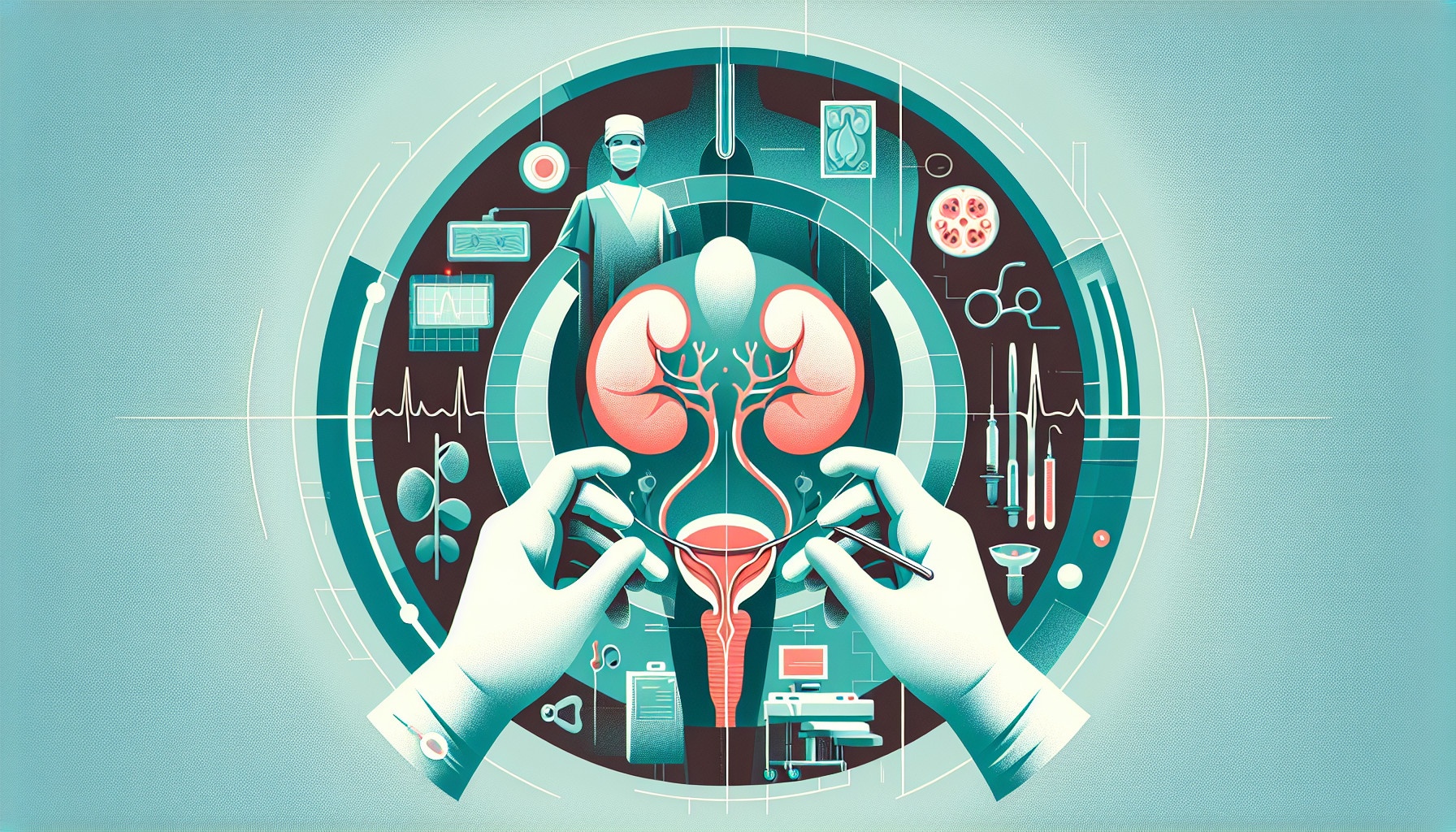Our Summary
This research paper discusses bladder endometriosis, a condition that accounts for the majority of urinary tract endometriosis cases. It’s often hard to diagnose because many women with the condition also have pelvic and menstrual issues. Signs that might suggest this condition include cyclical blood in the urine and a tender front vaginal wall.
Treatment typically starts with medication, followed by surgery if necessary. The most common surgical approach is to remove the endometriosis spot through the urethra. But to fully remove the endometriosis nodule, the affected part of the bladder needs to be cut out and then repaired.
In this paper, the researchers describe a two-step surgical approach. First, they identify and cut out the endometriosis spot with a cystoscopy, a procedure that uses a thin tube with a light and camera. Next, they use a robot to completely remove the nodule and repair the bladder.
The paper suggests that the robotic approach might be safer and easier for this complicated surgery due to the dense tissue that often forms in these cases.
FAQs
- What is bladder endometriosis and how is it diagnosed?
- What is the common approach for treating bladder endometriosis?
- How does a robotic approach benefit the surgical treatment of bladder endometriosis?
Doctor’s Tip
A helpful tip a doctor might tell a patient about bladder surgery is to follow all pre-operative instructions carefully, including fasting guidelines and medication restrictions. It is also important to communicate any concerns or questions with your healthcare team before the procedure. After surgery, make sure to follow post-operative care instructions closely to promote healing and prevent complications. Additionally, attending all follow-up appointments is crucial for monitoring your recovery progress.
Suitable For
Patients who are typically recommended bladder surgery for bladder endometriosis include those who have:
- Persistent cyclical haematuria
- Pelvic and menstrual complaints
- Tender anterior vaginal wall
- Failed medical therapy
- Presence of endometriotic nodules in the bladder
- Dense adhesions in the bladder area
These patients may benefit from surgical intervention to completely excise the endometriotic nodules and repair any damage to the bladder. Robotic surgery may be a preferred approach due to its safety and ease of use in complex cases with dense adhesions.
Timeline
Before bladder surgery:
- Patient may present with symptoms such as pelvic pain, urinary urgency, frequency, and dysuria
- Diagnostic tests such as ultrasound, CT scan, or cystoscopy may be performed to confirm the presence of bladder endometriosis
- Medical therapy may be initiated to manage symptoms and shrink the endometriotic nodules
- If medical therapy is unsuccessful or if there are complications such as recurrent infections or severe bleeding, surgery may be recommended
After bladder surgery:
- Patient will undergo a recovery period in the hospital or at home, depending on the extent of the surgery
- Pain medication and antibiotics may be prescribed to manage pain and prevent infections
- Follow-up appointments will be scheduled to monitor healing and ensure no complications arise
- Patient may need to make lifestyle changes to prevent recurrence of endometriosis, such as maintaining a healthy diet and regular exercise
- Physical therapy may be recommended to help with bladder control and pelvic floor rehabilitation
- Long-term follow-up will be necessary to monitor for any recurrence of endometriosis and to address any new symptoms that may arise.
What to Ask Your Doctor
- What are the potential risks and complications associated with bladder surgery for endometriosis?
- How long is the recovery period after bladder surgery?
- Will bladder surgery affect my ability to urinate normally?
- Are there any alternative treatments to bladder surgery for endometriosis?
- How successful is bladder surgery in treating endometriosis-related symptoms?
- Will I need further treatments or surgeries in the future after bladder surgery?
- What is the likelihood of recurrence of endometriosis after bladder surgery?
- How experienced are you in performing bladder surgery for endometriosis?
- What type of anesthesia will be used during the surgery?
- How long will the surgery take and how many days will I need to stay in the hospital?
Reference
Authors: Bahadur A, Mundhra R, Sherwani P, Kumar S. Journal: BMJ Case Rep. 2021 Aug 24;14(8):e244342. doi: 10.1136/bcr-2021-244342. PMID: 34429296
